Gravitational Waves: Discovery of the Decade?
This week, the discovery rocking the world of physics: gravitational waves! But what are they, and why are they set to change how we see the Universe in the future? Plus we take a look at the week's leading science breakthroughs, including a new way to see heart attacks before they happen, fighting superbugs with door knobs, and is there such a thing as being right- or left-brained?
In this episode
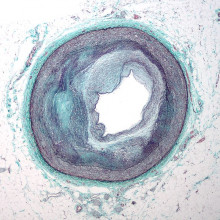
00:58 - Seeing heart attacks before they happen
Seeing heart attacks before they happen
with Dr Ramzi Khamis, Imperial College London
Heart disease is the commonest cause of death in the UK. It happens when the coronary arteries that carry blood to the heart itself become furred up. Luckily, nowadays, doctors can re-open narrowed arteries and prevent them from closing up again by inserting metal cages called stents. 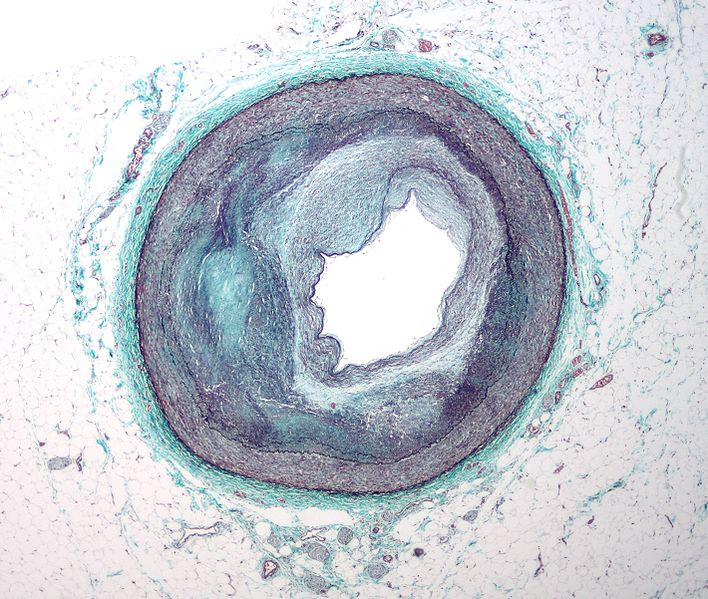 But knowing where to put the stent - in other words identifying the regions of the damaged blood vessel that are at greatest risk of blocking and causing a heart attack - can be very difficult. Now Ramzi Khamis, a British Heart Foundation cardiologist at Imperial College, has found a way to make these danger zones light up so doctors can see then, by using an antibody that glows, as he explained to Chris Smith...
But knowing where to put the stent - in other words identifying the regions of the damaged blood vessel that are at greatest risk of blocking and causing a heart attack - can be very difficult. Now Ramzi Khamis, a British Heart Foundation cardiologist at Imperial College, has found a way to make these danger zones light up so doctors can see then, by using an antibody that glows, as he explained to Chris Smith...
Ramzi - Some of these narrowings, which are called plaques, can rupture and when these plaques rupture, they cause a blood clot to form and then the blood clot causes obstruction in the artery, which then stops the heart muscle from getting enough blood and, therefore, enough oxygen and you end up having a heart attack. So the challenge is to identify which of these plaques are going to rupture and cause a heart attack, and up till now this has been a very challenging field.
Chris - And, of course, the reason for being interested in identifying which of these plaques might need intervention is that we know do have ways of going in and doing things to the inside of arteries to unclog them, open them up, and stabilize them, which we didn't before but, if we don't know where to do that, we can't really solve the problem?
Ramzi - That's absolutely right, Chris. With the current technology that just looks at what the artery looks like, this is still not good enough and, therefore, developing a way of identifying these hot areas is really, really important.
Chris - But these lesions are inside blood vessel, inside the person, so how can you see what's going on in the wall of the blood vessel inside a person?
Ramzi - This is the great advantage of using what we call molecular imaging. We've developed an antibody against this heavily oxidised LDL and we've attached a fluorescent marker to that and then we injected that into animals that mimic the disease that humans have which is hardening of the arteries (atherosclerosis). These antibodies home into where there are high levels of these oxidised LDL molecules and then you can visualise that using a special camera. And you can do that either in the whole body of the animal or you can do it by using a catheter that you can thread through inside the artery and you can look at these deposits from inside the artery, which will hopefully be the technique that we'll be using when we take this work further into humans.
Chris - And when you do this, do you actually find it flagging up areas of the walls of arteries which, when you look later using other techniques like looking down the microscope, do seem to have areas that look prone to rupturing.
Ramzi - Yes, absolutely. So when we look more closely at those areas that light up with our technique, you can see these areas have a heavy load of white blood cells, which are called macrophages, that congregate in areas of dangerous plaque. And we've also taken this forward when we stain atherosclerotic sections, which are taken from people who have had atherosclerosis or hardening of the arteries, you can see similar patterns as well.
Chris - This strongly suggests then you have got something which can home in on these hot spots? You would traditionally go in and what - open up the artery with a balloon and then and put one of these wire cages, these stents in there to hold the artery open?
Ramzi - Well yes, that would be one thing to do but, as technology moves forwards, there would be maybe other ways of treating that part of the artery without even having to put in one of these stents. One of the the things we are working on is attaching therapeutic and molecule to the antibody itself so that, as the antibody homes in to where the dangerous area of atherosclerosis is, it will also deliver a drug to that site in a very specific manner.
Chris - And are we far away? As in how long have I got to survive without having an MI (a heart attack) before I can be the beneficiary of this?
Ramzi - Well Chris, that all depends on how well our next bit of work goes. As you know, in science, things are unpredictable but if you give us at least five years, hopefully, we'll be at a stage where we can try and recruit you as our first human patient, if you are interested? And it's also...
Chris - I'd prefer to be the second actually... It's always good to be second isn't it because then the first poor guy finds out what the pitfalls are?
Ramzi - Well yes absolutely... I very much would encourage you to keep talking to us and we will keep updating you with our progress on how we are getting with getting this into humans.

06:14 - Copper kills superbugs, wet or dry...
Copper kills superbugs, wet or dry...
with Professor Bill Keevil, University of Southampton
Florence Nightingale's design for hospital wards is largely out of favour these  days, but the interior decor of a century ago - including the brass door handles - might be about to make a comeback. Not so much on aesthetic grounds but because, as Southampton scientist Bill Keevil has discovered, copper-rich alloys have a powerful antimicrobial effect capable of blitzing both bacterial superbugs - like MRSA - and even some viruses, like the flu, as he explained to Chris Smith...
days, but the interior decor of a century ago - including the brass door handles - might be about to make a comeback. Not so much on aesthetic grounds but because, as Southampton scientist Bill Keevil has discovered, copper-rich alloys have a powerful antimicrobial effect capable of blitzing both bacterial superbugs - like MRSA - and even some viruses, like the flu, as he explained to Chris Smith...
Bill - Humans are very tactile people - we don't wash our hands very often. So what that means is we might go to the toilet, and particularly men do not wash their hands, and then they walk around touching contact surfaces such as door handles, push plates, stair rails, things like then and then, if someone else comes and touches that surface, they can pick up the bugs.
Chris - How long with MRSA remain on some of these surfaces? You've talked about push plates on doors, door handles. How long will it stay there in a viable state so a person coming along could pick it up?
Bill - Oh, we're talking of very tough bugs here - they will survive weeks on a dry surface. And the problem is, of course, how often do we clean any surfaces, even in hospitals. We don't have 27/7 protection just from standard cleaning practices, so that's why we're interested in antimicrobial metals such as copper.
Chris - And how do they work - what have your found?
Bill - Copper's a very interesting metal. It's actually quite reactive and we've found that with bacteria, it stops the bacteria respiring - so they stop breathing - it can punch holes in their cell membranes so that their constituents leak out, and it can destroy their DNA.
Chris - How did you actually find this? What were the experiments were you doing to show that this is the case?
Bill - Well because we're interested in touch surfaces, we developed a model system where we simulated a hand touch onto a surface and put in several million MRSA onto those surfaces. They started to die literally as soon as they touched the surface.
Chris - How do you think the copper is doing this - do you know?
Bill - Yes, copper is a very reactive metal - it takes part in oxidation reduction reactions. So, for example, when it punches holes in bacterial cell membranes - they're made of lipid, a kind of fat, and the copper oxidises that lipid and that, effectively, punches holes into the lipid membrane. The copper also forms reactive oxygen species and these species, molecules such as peroxide, superoxide, hydroxyl radical, attack and destroy proteins, attack and destroy fats, lipids and they attack and destroy DNA.
Chris - Your hypothesis then is that when the bugs are on that surface, the copper is producing all of these chemicals, the bugs find themselves in a really hostile environment and it just destroys them.
Bill - Absolutely correct. And, in fact, we have microscopy procedures where we can use special fluorescent stains and you can actually see the production of these reactive oxygen species in real time as the bacterial touch down on the copper surface.
Chris - Has anyone tried doing the experiment for real - putting these sorts of treated surfaces into a hospital environment and seeing if it does cut down infection rate?
Bill - Well yes. It's been very exciting that partly out of the lab work we started, people have been putting different copper alloys in hospitals all over the world and, in every case, they're reporting something like a 90% reduction in the number of bugs you can actually detect on the copper surfaces. And what's really exciting - a study was undertaken - two hospitals in New York, one in Charleston and there, looking at all the data, they're reporting a 58% reduction in infection rates. So I think that's a classic example of translation from the laboratory into the real world setting.
Chris - Are researchers and technologists not already using silver in the same sort of way?
Bill - Well that's an interesting one because if you ask anyone, particularly in the clinical field, name and antimicrobial metal, they might suggest silver but, in fact, we've done comparable experiment comparing it with copper. You can put MRSA onto a dry silver surface and the MRSA survives quite nicely for 24 hours.
Chris - So what are you advocating then? We go back to the good old Victorian days of copper and brass doorknobs on every door and this would solve the problem?
Bill - Well, the Victorians were not completely stupid. It's certainly interesting that there was an American physician, Phyllis Coon, that 25 years ago, she noticed that when they started to take the brass door handles and push plates out of her hospital, the infection rate started to go up. She actually warned people back then that this might be a problem. So we're not saying go back to brass - I think you go back to one of these modern alloys and, of course, the architects love this now because the alloys have got a whole range of different colours and textures so they're really starting to switch on to this as well.
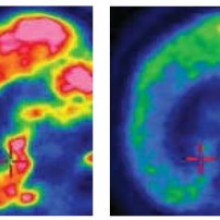
11:47 - Left or Right brained: it's a myth!
Left or Right brained: it's a myth!
with Dr Kat Arney, The Naked Scientists
Kat Arney, wraps her brain around the latest bit of bad science: the claim that people can be "left- or right-brained"...
Kat - If you've been killing time on social media sites such as Facebook, you've probably had a go at some of the tests and quizzes that pop up from time to time, from 'What country describes your personality?' to "What shaped pasta would you be?' One that's been recently doing the rounds claims to be able to tell whether someone is more 'right-brained' or 'left-brained' and, in turn, how this affects their personality and character, how we go through life and the decisions we make.
According to the typical blurb, left-brain people are more organized and systematic while right-brain people are more creative and intuitive. Known as 'hemisity' according to some psychology researchers, t's an attractive idea - especially if you want to blame your lack of bright ideas or organisational skills on the sidedness of your brain. But is there any scientific truth to these tests and what they claim to be able to tell us?
It's obvious from looking at the anatomy of our grey matter that the brain is divided into two halves, or hemispheres, and neuroscientific studies have shown that specific cognitive abilities - that's things like vision, movement, languages and much more - can be found in three different types of patterns in the brain.
Some tasks, such as general attention, are done equally in both halves of the brain, as is the wonderfully-named 'executive function' - the ability to plan and control the things you do. Other abilities, such as vision, are found in both halves of the brain, but specific to the opposite side of the body - for example, the motor cortex in the left sides of your brain controls the movement of the right side of your body.
And then there are some tasks that are specific to one hemisphere - for example, language and mathematical skills seem to be localised to the left side of the brain, for people who are right-handed (meaning their left hemisphere is dominant). But music and spatial processing - being able to figure out shapes and spaces - is usually found in the right side of the brain.
It's this discovery that seems to have led to the idea that left-brained people are good at maths and analytical skills, while right-brain people are better at all the creative stuff. But in fact this is a vast oversimplification of the way that both sides of the brain work together. And it's certainly not true that someone's general personality is located in one half of their brain rather than the other.
For a start, there's a huge amount of inter-connectedness between the two halves of the brain, and information flows seamlessly between them through a thick cable of nerves known as the corpus callosum. And a 2013 study using fMRI brain scanning showed that there doesn't seem to be a neuroscientific basis for the idea that people are predominantly left or right-brained, based on brain scans from more than a thousand people aged from 7 to 29. While there were local examples of certain different tasks tending to be done by the left or right brain, there was no overall bias to either side.
So does it matter? Surely social media quizzes are just a bit of fun to pass the time during a lunchbreak, and nobody takes it seriously. But I think it does. We like to put people into boxes, but giving someone a simple label like left or right-brained doesn't really reflect the underlying plasticity we all have to tackle life in a range of ways. Telling someone they're "right brained, so they're going to be no good at maths", or "left-brained so they'll never be creative" is limiting and not based on sound science. So let's stop trying to label our brains, and label this particular idea as a myth.
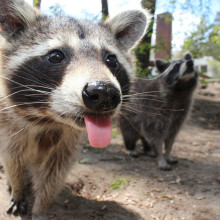
15:52 - Scaring animals is good for nature
Scaring animals is good for nature
with Justin Suraci, University of Victoria
New research published in the journal Nature Communications suggests that when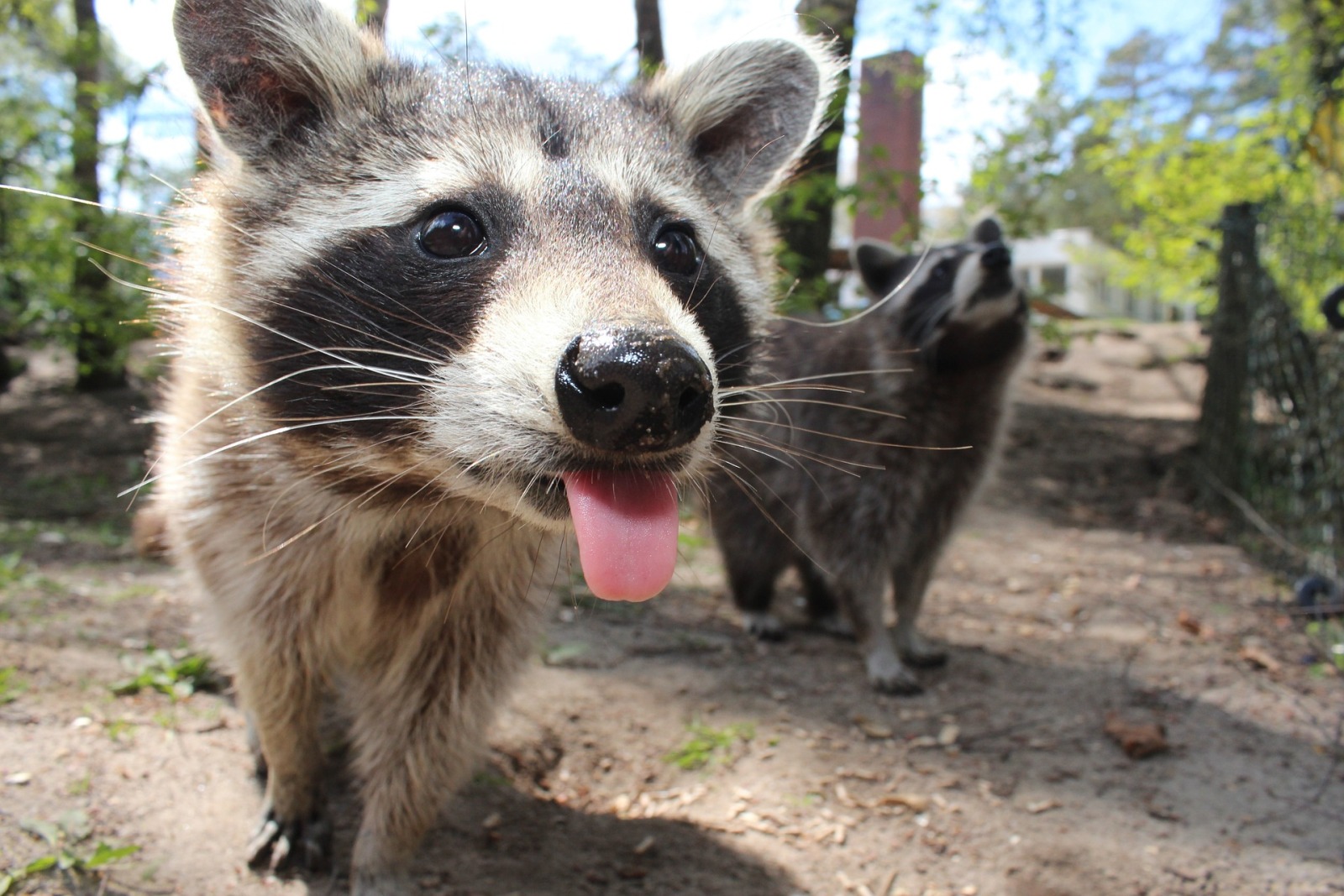 it comes to controlling wild populations of animals we've, in part, got it wrong. Normally, we cull deer or elk because their large numbers have significant impacts on the environment; but it turns out that simply fearing predators may be as effective as predation itself at keeping species numbers in check. Graihagh Jackson has the story...
it comes to controlling wild populations of animals we've, in part, got it wrong. Normally, we cull deer or elk because their large numbers have significant impacts on the environment; but it turns out that simply fearing predators may be as effective as predation itself at keeping species numbers in check. Graihagh Jackson has the story...
Graihagh - This is the sound of a racoon having a very happy time foraging on a beach in Canada. They're so cute and cuddly with those stripey tales and bandit masks but actually, they're a bit of a nuisance to those who have to live side by side with them as my Aunty Elaine found out when she moved across the pond.
Elaine - We decided to landscape the back garden so we had all this fresh sod delivered and laid - it looked lovely. Anyway we left our garden that night only to come down in the morning to find all the turf had literally been rolled back like a carpet; beautifully done, complete straight lines, no damage to any of the grass and we'd no idea who or what could have done it. We never suspected the racoons so we rolled it all back into place and stamped it down and the next morning we woke to the same scene, and so began the battle, and it actually went on for weeks - it turns out they can roll the lawn up indefinitely. We finally won with a mixture of cayenne pepper and water sprayed on the grass and, apparently, racoons hate it. Actually, it took a lot of diligence on our part but gradually they stopped or maybe they actually just found a fresh garden to terrorise - who knows.
Graihagh - Garden wrecking aside, these racoons have succeeded in being such a nuisance, in part, because of us humans...
Justin - So my name is Justin Suraci and I am a PhD student at the University of Victoria. Humans have succeeded in wiping out large carnivores in habitats across the globe and one of the major consequences is outbreaks of the things that large carnivores eat. So, things like deer and elk, or smaller predators like coyotes and racoons and so these species can devastate the plants and animals that they consume when the large carnivores are no longer around to keep them in check.
Graihagh - And so normally people's solution to this is just to trap and hunt them but your research is showing that that isn't enough?
Justin - Yes exactly. So we've attempted to control these outbreaks through hunting and trapping programmes; but what we're doing there is we're killing some of their prey but what we can't replicate is this fear that a large carnivore would instill in all of it's prey, essentially all of the time, which can lead to reductions in prey foraging behaviour and, essentially, play a major role in keeping the populations in check.
Graihagh - How did you find out or come to the conclusion that fear is really important here?
Justin - So we came to that conclusion through an experiment that we did in the Gulf Islands of British Columbia in Canada. So this is a coastal archipelago in which all the native large carnivores have all been killed off - it's essentially racoon paradise. So there's nothing to keep these smaller racoon predators in check; they're essentially devastating the small songbirds and the intertidal crabs and fish and we had the hunch this had something to do with the fact they no longer had anything to fear.
Graihagh - So you had the hunch - how did you test it?
Justin - We effectively reintroduced just the fear of large carnivores. So on multiple islands across multiple years we would choose shoreline sites and we would play either the sounds of large carnivores - so in this case barking dogs - or non-scary control sounds. And the way we would do this is we would hang speakers from a tree and we monitored the behaviour of the racoons and the abundance of the marine prey. And we found that when we reintroduced the fear of large carnivores, this has such a strong effect on racoon behaviour that you actually see an increase in the abundance of the crabs and the fish that raccoons eat.
Graihagh - How much of a difference though are we talking about here?
Justin - This 66% drop in raccoon foraging led to pretty substantial increases in the abundance of their prey. Some of their major prey types are small intertidal fish, which we saw an 81% increase in the abundance of these fish and also large intertidal crabs - a species called the red rock crab - and we saw a 61% increase.
Graihagh - It's interesting to hear that fear alone had such a big impact. Are you then advocating that we should be installing - I don't know, barking trees all over the world over? Is there evidence to suggest that this would work in other species besides raccoons?
Justin - Yes, there is evidence to suggest that other species would be similarly sensitive to just the sounds of their predators however, it's unlikely to be an effective long term solution. Like you said, if you've got a tree that's been barking at you for three months, you're going to eventually learn that that tree is not actually a threat. So what we would suggest this study shows like the main conservation implication is that we actually need to promote the conservation, and potentially the reintroduction, of large carnivores or even allowing large carnivores to naturally recolonise.

21:20 - Coral catastophe?
Coral catastophe?
with Cat Dixon, Sea Life London Aquarium and Dr Rebecca Albright, Stanford University
This week, news broke that The Great Barrier reef is in worse shape than  previously thought owing to ocean acidification. The Great Barrier Reef is one of many populations of corals world wide. And although they look like plants, corals are actually colonies of animals. Tiny polyps, which are almost like miniscule jellyfish, cluster together and gradually build-up a calcium carbonate exoskeleton. Living alongside them are algae, which feed the coral by capturing the energy in sunlight. Georgia Mills went to find out more about these unusual animals, and the problems they face...
previously thought owing to ocean acidification. The Great Barrier Reef is one of many populations of corals world wide. And although they look like plants, corals are actually colonies of animals. Tiny polyps, which are almost like miniscule jellyfish, cluster together and gradually build-up a calcium carbonate exoskeleton. Living alongside them are algae, which feed the coral by capturing the energy in sunlight. Georgia Mills went to find out more about these unusual animals, and the problems they face...
Georgia - The Great Barrier Reef may be world famous for it's coral but it's a little bit out of the way, so I journeyed to Sea Life London Aquarium to have a look at some for myself...
I was taken through the blue fish filled corridors, past the sharks, on to the behind the scenes tour and in a room full of very loud water pumping systems, amongst the jellyfish and the rays, I found a tank of corals and, conveniently, someone who could tell me about them.
Cat - Hiya. My names Cat Dixon, I'm a senior aquarist at Sea Life London Aquarium. Coral reefs are very, very important and they are home to about 25% of all marine life providing shelter, feeding grounds, and nurseries for a wide, wide range of marine organisms. And the biodiversity of coral reefs is actually believed to be one of the highest on the planet, more than even rain forests.
Georgia - We're currently standing in front of a big green tank with several samples of coral in it. So what am I looking at here?
Cat - This is where we frag and grow our corals. So we take a large piece of coral, break a little bit off, and then grow it up here. Some of them we actually get from Heathrow customs that have been confiscated at the airport and others we get from other sites.
Georgia - When I think of corals, I tend to think of quite brightly coloured things. These in here, they all look a bit brown. Why are these not brightly coloured?
Cat - At the moment, because it's early in the morning, the lights aren't on yet, so when the lights come on, all the algae will come out and they'll will be a lot brighter.
Georgia - Well as much as I like it in this room - there's loads of jelly fish over there, there's corals, there's loads of sea plants - shall we go somewhere a bit quieter.
Cat - Yes let's do that...
Georgia - Lovely...
Cat - So yes, there are many threats facing coral reefs at the moment. Some of these include destructive fishing practices, like bottom trawling can dredge up the bottom of the sea and damage the corals. Pollution - farm run off can be toxic to corals and also smother them with algal blooms and then they can't have access to sunlight. And also climate change is a quite a big threat that corals are facing at the moment..
Georgia - And the reason why climate change is such a big worry is because it attacks the coral in multiple ways. Firstly, there's coral bleaching, which is where increased temperatures are causing coral to actually expel the algae that provides them with their colour and their energy; this leaves them unable to grow properly. Secondly, there's a bigger risk of catastrophic weather events physically damaging the reefs. And thirdly, there's something call ocean acidification...
Cat - Ocean acidification is where the excess carbon dioxide in the atmosphere is actually being absorbed into the oceans and this is forming, with the seawater, carbonic acid which is reducing the Ph of the ocean. This, in turn, is forming with carbonate ions that the corals would usually bond with to create their calcium skeletons and, therefore, they are not able to grow and build there skeletons as they should be.
Georgia - Scientists know from lab experiments that high acidity harms coral growth but is the small Ph change in the ocean actually causing any problems for the corals, or could it be one of the many other human impacts that's stunting their growth?
A study just out in the journal Nature has taken the science outside of the lab and into the ocean and has finally revealed the answer. I called up the lead author, Dr Rebecca Albright while she was at the AGU Ocean Science meeting...
Rebecca - We wanted to effectively restore the chemistry of seawater that was flowing over a coral reef community in their natural environment, two conditions that would have been expected under preindustrial scenarios and then monitor how the reef responded. We did this by adding sodium hydroxide, which is a base or effectively an antacid, to the seawater to increase the alkalinity of that seawater that was flowing over the coral reef community and this temporarily kind of reversed ocean acidification and then we monitored the calcification response. And what we found was that when seawater chemistry was restored closer to preindustrial conditions, coral reef calcification was enhanced. So these results really represent the first piece of strong evidence that ocean acidification is already impairing coral reef growth.
Georgia - As well as this evidence, this study also shows that if you restore acidity back to normal, the corals can grow again. So, could this be the answer to our problems? Could we use Rebecca's technique to engineer the oceans to be like they once were?
Rebecca - Alkalinisation of the oceans has been suggested as a geoengineering technique to mitigate ocean acidification impacts. However, we are very much of the opinion that this is not a scaleable solution to mitigating ocean acidification impacts for global marine ecosystems over the long term. The Great Barrier Reef itself is over 2,000 kilometers long and ocean acidification is a chronic problem that continues to worsen as the oceans continue to absorb carbon dioxide from the atmosphere. So, it's really important to realise that the only solution for mitigating ocean acidification impacts, and preserving coral reef ecosystems into the future is to drastically cut carbon dioxide emissions.
Georgia - This was a sentiment Cat back at Sea Life agreed with as corals are clearly worth keeping, whether they're in the Great Barrier Reef or on the shores of the UK.
Cat - There's some in Scotland and Ireland.
Georgia - Oh, that's too far away. I was hoping you were going to say the Thames...
Cat - No, I'm afraid not!

27:38 - What were Einstein's predictions?
What were Einstein's predictions?
with Lord Martin Rees, University of Cambridge
Gravitational waves: this is something that Einstein predicted 100 years ago with his theory of general relativity and scientists have since been scouring the universe for them. This month, the team at the Laser Interferometry Gravitational Observatory, LIGO, announced they'd finally done it... But what are these gravitational waves, how were they found, and why does the discovery matter?
To explain, first we need to go back several hundred years to the birth of the concept of gravity itself and the Cambridge scientist Isaac Newton. He was at Trinity College and - appropriately enough - so is the Astronomer Royal Martin Rees. He spoke to Chris Smith about the history of gravity, beginning with Newton's groundbreaking insights...
Martin - It was the first great unification; he realised that the force that holds us to the ground and makes the apple fall is the same force that holds the moon in it's orbit around the earth and hold the planets in their orbits around the sun. He learnt that this force affects all substances equally and that it obeys the so-called inverse square law, which means that if two objects get twice as far away from each other, the force gets four times weaker and this law explained very well all that was known at that time about the orbits of the planets. But it breaks down in two ways; one way is if things go at nearly the speed of light and the other way is if gravity was very strong. Gravity in the earth and in the sun is not that strong but we imagine that there are objects in the universe where gravity is much stronger...
Chris - Like black holes for example?
Martin - An extreme phenomenon is a black hole, which was one of the great consequences of Einstein's theory, and Newton's theory breaks down under those extreme conditions.
Chris - So along comes Einstein, quite a bit later, but how did Einstein change that?
Martin - Well Einstein didn't really overthrow Newton, he extended and transcended Newton. And his theory allows us to correctly describe what happens under extremes of strong gravity and high speed, but also it gave us a deeper understanding into what gravity was. It wasn't really clear to Newton why it should be inverse square law, why all objects should fall at the same speed whatever they were made of, but that became natural when Einstein saw that this was really a consequence of space itself. Space interacts with mass and the mantra is: matter tells space how to curve; space tells matter how to move; and as an interaction between the behaviour of space and the matter in it.
Chris - Einstein puts forward the idea of this concept of space time, where the fabric of the universe is the notional entity space time and big things that are very gravitationally active will exert an effect or an influence on that space time...
Martin - Yes, space itself becomes a sort of active arena where things happen and the strongest gravity is around black holes. And if gravity changes, if for instance two black holes fall together, then there was an issue in that we thought that nothing could travel faster than light. So, if two black holes crash together, for instance, something must go at the speed of light in order to cause a change in the gravitational pull felt by distant objects, and so there must be some sort of wave that transmits information. And so, Einstein generally predicted that if things change, then they must emit gravitational waves and the trouble is that these waves are extremely weak and they're only emitted by very violent events indeed. That's why they've been so hard to find.
Chris - And how do we know that Einstein got it right?
Martin - Well, there've been lots of tests of Einstein's theory. Classically, soon after he proposed the theory there were tests of how light was bent when it passed close to the sun during an eclipse and astronomers have found evidence for black holes, but we'd really like to have detailed models for what black holes are like. Theorists can calculate what a black hole ought to be like, what shape it would be. But it's been this discovery of gravitational waves which has really helped to clinch that because what's been discovered is that we get this chirp of gravitational radiation that we've just heard earlier on and that's thought to be due to two black holes spiraling together. They orbit around each other, they omit gravitational waves that takes away energy and eventually they coalesce and merge and then form a single black hole, and this effect is predicted by Einstein's theory. We can calculate what ought to happen and what's marvelous is that what's been observed to happen is exactly what you would expect.
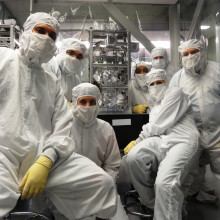
33:50 - How LIGO made waves in astronomy
How LIGO made waves in astronomy
with Professor Norna Robertson, CalTech, and Professor Sheila Rowan, University of Glasgow
One of the predictions Einstein made that hadn't yet been observed were the gravitational waves, and this is what the LIGO team found this month. Graihagh Jackson was there for the announcement, and spoke to scientist Professor Norna Robertson about how they did it...
Norna - The event that we say was two black holes which were orbiting each other and they're also moving towards each other because they're losing energy as they orbit each other and so they speed up and go round and round, faster and faster until they finally merge. And it's that final inspiral and merger, which happens in a fraction of a second, that produce a big burst of gravitational waves.
Graihagh - And that's rippled across the universe to us. How long does it take to reach us though?
Norna - The event happened something like one billion years ago, a billion light years away, and it's take all that time to ripple across space towards us and pass through the Earth on September 14th, 2015.
Graihagh - It's quite remarkable really, isn't it?
Norna - It is remarkable. It's wonderful. There have been many, many people involved in developing detectors and developing all the analysis techniques and, for all of us, this is really a momentous occasion.
Graihagh - Alongside Norna, something like a thousand scientists across 16 countries have been working together for 25 years! And, like Norna, Sheila Rowan from Glasgow University has spent her whole career searching for them...
Sheila - I wanted to be a scientist and wanted to be a physicist, I think, since I was about nine years old. When I was young, I couldn't think of anything more exciting to do in life than spend it studying these big questions and the universe. When you go out and you look up, where did it all come from? What's out there? How far does it go? And I've been lucky enough that I've been able to spend my life working in this area and doing that.
Graihagh - Lucky enough to also see all her hard work come into fruition. But how did LIGO detect them?
Sheila - When they're produced, of course, there's a huge amount of energy as two black holes collide but then that's got to spread out and travel across the universe. So, by the time it gets to us here on earth, it's a tiny signal and that means it's hard for us to build instruments that are sensitive enough to do that. And the way we do it is we take light from a laser, we split that laser light into two and we send it out along two four-kilometer long paths. It hit mirrors at the end of those paths, those mirrors send laser light back, the light then adds up again there, and whether it adds up so that you get a bright spot or whether it cancels itself out and you get a dark spot, depends on how far the light has travelled on that four kilometer path. Now what a gravitational wave does is it changes the lengths of the arms, the paths that light has travelled and, fundamentally, it does that by shaking the mirrors that we've put down. The trouble is it doesn't shake them very much - it shakes those mirrors by about 1/10,000 of the size of a proton inside an atom.
Graihagh - So how would you ever measure that?
Sheila - It's a big challenge and that's one of the reasons it's taken decades of work to do this, and there are various things that are key. One incredibly important thing, of course, is to take those mirrors that the gravitational wave's going to shake and make sure that nothing else shakes them. So, we couldn't just sit them on the ground because the ground moves all the time. It shakes due to far away earthquakes, it shakes just due to people driving cars past, so we can't do that. Instead what we do is we take the mirrors and we actually hang them...
Graihagh - Now this isn't how you'd hang a mirror on the wall - no siree. Because a gravitational wave passing through would move a mirror by less than the width of a proton and all this other stuff that Sheila mentioned: seismic activity, cars even, would move the mirrors and could give us a false positive. So how do you make a motionless mirror - I hear you ask? One of the key things is what you hang the mirror with. LIGO have use ultra high tech glass or silica to hang it because silica molecules don't wobble around too much. You can think of this as kind of like the fanciest shock absorbers around. This makes the mirror almost motionless. The final key component is the fact that there are multiple devices that record the movement of the hundreds of components that all connect to the mirror. Knowing how much these various bits of machinery move it means that with great precision they can account for these tiny movements. Now that they've made these motionless mirrors and even detect one gravitational wave, when will they detect the next one?
Sheila - We don't know the answer to that yet. We do have more data, we just haven't had time to look in there yet and see what's in there. So, we don't know, you'll have to wait to hear back from us but we promise we're looking hard.
Graihagh - Watch this space then?
Sheila - Or as my colleague in Glasgow often says "watch this space time".

39:46 - Gravitational waves: the bigger picture
Gravitational waves: the bigger picture
with Dr Andrew Pontzen, UCL
This week, we're discussing the recent discovery of gravitational waves. We've had a lot of questions come into our web forum and by email so Kat Arney put them to UCL cosmologist Andrew Pontzen. First up, Kat asked whether the wave was definitely produced from teo colliding black holes, as new evidence from Harvard seems to suggest it could have come from a star...
had a lot of questions come into our web forum and by email so Kat Arney put them to UCL cosmologist Andrew Pontzen. First up, Kat asked whether the wave was definitely produced from teo colliding black holes, as new evidence from Harvard seems to suggest it could have come from a star...
Andrew - Oh gosh, well - welcome to the world of theoretical physics where any new piece of data gets people tremendously excited and people start pouring over it in a lot of detail. One of the most striking things about the wave that was detected is just how closely it matches what people expected to see if two black holes merged. So it would be very challenging to think it's something substantially different.
Kat - And do we know exactly which black holes they were and where they were in space?
Andrew - Not exactly, no. Certainly we don't have any sense of - oh we've seen these black holes before and now we know they're merging. This is a totally unknown object until the moment at which it's gravitational wave arrived. Now the plan is, in the long term, to be able to accurately work out exactly what direction did a gravitational wave come from. But the trouble is, at the moment, we're not quite able to do that and the reason is that, at the moment, there are two detectors running and the whole idea of being able to pinpoint it on the sky requires a kind of triangulation...
Kat - So you need another one, basically?
Andrew - ... you need another one. You need at least three if you want to be able to find a pinpoint location on the sky to point a telescope and say, yes it came from that direction.
Kat - Do we know anything more from these results about what gravitational waves are actually made of. Because we know for light beams that they're made of photons and sometimes people might have heard this word gravitons; the idea that gravitational waves might be made of particles as well. Does this move us any more forward with this kind of idea?
Andrew - Well, unfortunately this doesn't really help us with that particular puzzle. In the same way that experiments were done on light long before it was realised that, actually, you could imagine making light dimmer, and dimmer, and dimmer until, eventually, rather than it behaving like a wave you're just left with single particles coming out of your light bulb, which is what we mean when we say a photon. You could imagine that a similar process might be possible with gravitational waves and somehow you make their intensity smaller, and smaller, and smaller until you're left with a single graviton, but the intensity of these waves is far too high for us to be able to say anything about that at all. So, at the moment, this discovery really doesn't shed any light on that particular direction.
Kat - There's been so much talk over the past couple of weeks about this discovery. It really has been incredibly exciting, certainly on social media, the national media, the global media. Do we actually believe it? Do you reckon it really, really is real this time because there's been false alarms in the past - we're going to hear about one of those later - but is this the real deal? What do you reckon?
Andrew - Well, I mean as a scientist you always have to have a little tiny bit of doubt left. However, for what it's worth I, and more importantly, an awful lot of the world's experts on gravitational waves are extremely convinced by this particular detection and the reason is twofold. First of all you can simply go and look at the data and compare it to the theoretical prediction for what those waves should look like and you can see what an exquisite fit the data produces. But, on top of that, if you look in that paper you'll also find a lengthy discussion of what are the statistical chances you could be fooled; that something could turn up in your detector that looks very much like this but actually isn't, and they put the chances extremely low. And so, my money's on this being absolutely real.
![BICEP2 Telescope == {{int:filedesc}} == {{Information |Description ={{en|1=The Dark Sector Laboratory at [[:en:AmundsenâScott South Pole Station|AmundsenâScott South Pole Station]]. At left is the [[:en:South Pole Telescope|South Pole Telescope]]. At right is the...](https://www.thenakedscientists.com/sites/default/files/styles/medium/public/media/Dark_sector_laboratory.jpg?itok=1wKEzT2Z)
44:17 - Didn't BICEP detect gravitational waves?
Didn't BICEP detect gravitational waves?
with Dr David Marsh, University of Cambridge and Dr Jon Kaufmann, University of California, San Diego
If you cast your mind back to early 2014, you might recall news that a group ![== {{int:filedesc}} =={{Information|Description ={{en|1=The Dark Sector Laboratory at [[:en:Amundsen-Scott South Pole Station|Amundsen-Scott South Pole Station]]. At left is the [[:en:South Pole Telescope|South Pole Telescope]]. At right is the [[:en:BICEP2|BICEP2]] telescope.}}|Source ={{own}}|Author =[[User:Ketiltrout|Ketiltrout]]|Date =2011-01-18|Permission =|other_versions =}}[[Category:BICEP]][[Category:South Pole Telescope]]== {{int:license-header}} =={{self|cc-by-sa-3.0|GFDL}} © [[User:Ketiltrout BICEP2 Telescope](/sites/default/files/media/Dark_sector_laboratory.jpg) of American astronomers, working with a telescope called BICEP, were studying the sky to find remnants of gravitational waves from the big bang... To much fanfare, they published their findings reporting the discovery of these ripples. Unfortunately, subsequent tests showed that what they were seeing was actually down to space dust. But their search continues though, because they're trying to find and use these waves to probe what happened during the earliest moments in the history of the Universe, following the Big Bang; this is a period known as "inflation" but it's further back in time than traditional telescopes can see, which is why we need gravity waves to probe it. Graihagh Jackson...
of American astronomers, working with a telescope called BICEP, were studying the sky to find remnants of gravitational waves from the big bang... To much fanfare, they published their findings reporting the discovery of these ripples. Unfortunately, subsequent tests showed that what they were seeing was actually down to space dust. But their search continues though, because they're trying to find and use these waves to probe what happened during the earliest moments in the history of the Universe, following the Big Bang; this is a period known as "inflation" but it's further back in time than traditional telescopes can see, which is why we need gravity waves to probe it. Graihagh Jackson...
Graihagh - If you're anything like me and love a bit of boogying you might be dancing around or jiggling around in your seat. And you know what, if you are, you're making gravitational waves. Pretty cool, huh?
David - Yes it is - pretty cool. Undetectably small but, nevertheless, you're creating gravitational waves.
Graihagh - Yes, David Marsh is right; they're so small we can't even detect them. It's only the ripples from massive events that we can pick up on, like two black holes colliding. But what about the biggest event in the history of the universe - the big bang.
Jon - Oh yes, absolutely so the inflation theory - the sort of bang behind the big bang. This would send gravitational waves rippling throughout the universe.
Graihagh - But how would Jon Kaufman look 13.8 billion years ago into the past? Well, with something called the CMB - the cosmic microwave background. This is a faint glow of light that fills the universe with nearly uniform intensity; it's the residual heat of creation, the afterglow of the big bang, streaming through space these last 13.8 billion years. Much like the heat from a sun warmed rock re-radiating the heat at night. Notice how I say though nearly uniform intensity. David Marsh again...
David - When we look at the sky at microwave wavelengths, we would see cosmic microwave background and we would see it almost having the same temperature everywhere. So we can compute the temperature - it's 2.7 kelvin, -271 degrees.
Graihagh - Pretty cold then?
David - Cold, yes. And then you can compute it - first, second, third, forth, and then at the fifth digit you see that it starts to vary, so at that level of temperature, it starts to fluctuate.
Graihagh - Temperature fluctuations only after the fifth decimal place - that's absolutely bonkers. But these tiny changes in residual heat are critical to the study of the universe because it's the fossil imprint of those bang big light particles that tell us about another fluctuation; the ripple that gravitational waves made in the fabric of space time. But members of the BICEP team like Jon Kaufman have to go to great lengths to detect them - like the South Pole...
What you can hear is a video of Jon and colleagues heading out on a skidoo to the telescope. They're wearing so much clothing that not a bit of flesh is visible, despite it being a beautiful, blue-skied and sunny day.
Jon - It can be gruelling but what our telescope does is we look for the temperature of the cosmic microwave background, the E mode polarisation, and the B mode polarisation.
Graihagh - And so this polarisation you're looking for - what's that?
Jon - How light is an electromagnetic radiation. It means that there's an oscillating electromagnetic field and if it has a preferred direction that it likes to oscillate. If you imagine you hold a string and you wip your hand up and down, you are creating a wave on the string that's polarised in one direction - the up and down direction. If you wip your hand left and right, you'll create a polarised wave left and right. It just means that there's a preferential axis to the wave that you've generated.
Graihagh - And that's what you detected?
Jon - Right. Only gravitational waves can crate B mode polarisation at this cosmic microwave background time. And it became clear that we were seeing something and none of us believed it. We all expected it was some sort of systematic contamination, and so we set about, for a long time, just trying to convince ourselves that what we were seeing wasn't real. All sorts of crazy ideas of what this could be, including one of my favourites, which is the communication satellite might have been interfering with our telescope, so we ruled that out. Finally everything was ruled out; it looked like this must be on the sky. And then off course, we published and articles starting popping up - New York Times and NPR and everything. All sorts of news sources and then things got very interesting.
Graihagh - And do you know why it got interesting - because of seemingly something very uninteresting - dust. Yep, you heard me right - dust. Things like comets, supernovae, all leave dust in their wake and this dust can imitate the light polarisation sign that Jon is looking for. But when another satellite called PLANCK came along, it suggested that it's not really quite that simple. Jon and the BICEP team continue to look for this polarisation and hints of gravitational waves down at the south pole. But now the LIGO team have found them, should Jon just give up the ghost... Now that it's not longer a ghost...
Jon - So these gravitational waves, the ones that experiments like BICEP are looking for are pretty significant because they would be evidence for the theory of inflation. And the theory of inflation is one of the most important theories, I think, humankind has ever developed, in the sense that it is the sort of "why are we here," and inflation answers that. And so while there's a significant amount of evidence for it, the smoking gun of this has not been detected and that is these gravitational waves.

51:11 - Gravitational waves and future astronomy
Gravitational waves and future astronomy
with Lord Martin Rees, University of Cambridge, Dr Andrew Pontzen, UCL
Gravitational waves made a big splash around the world but why has their 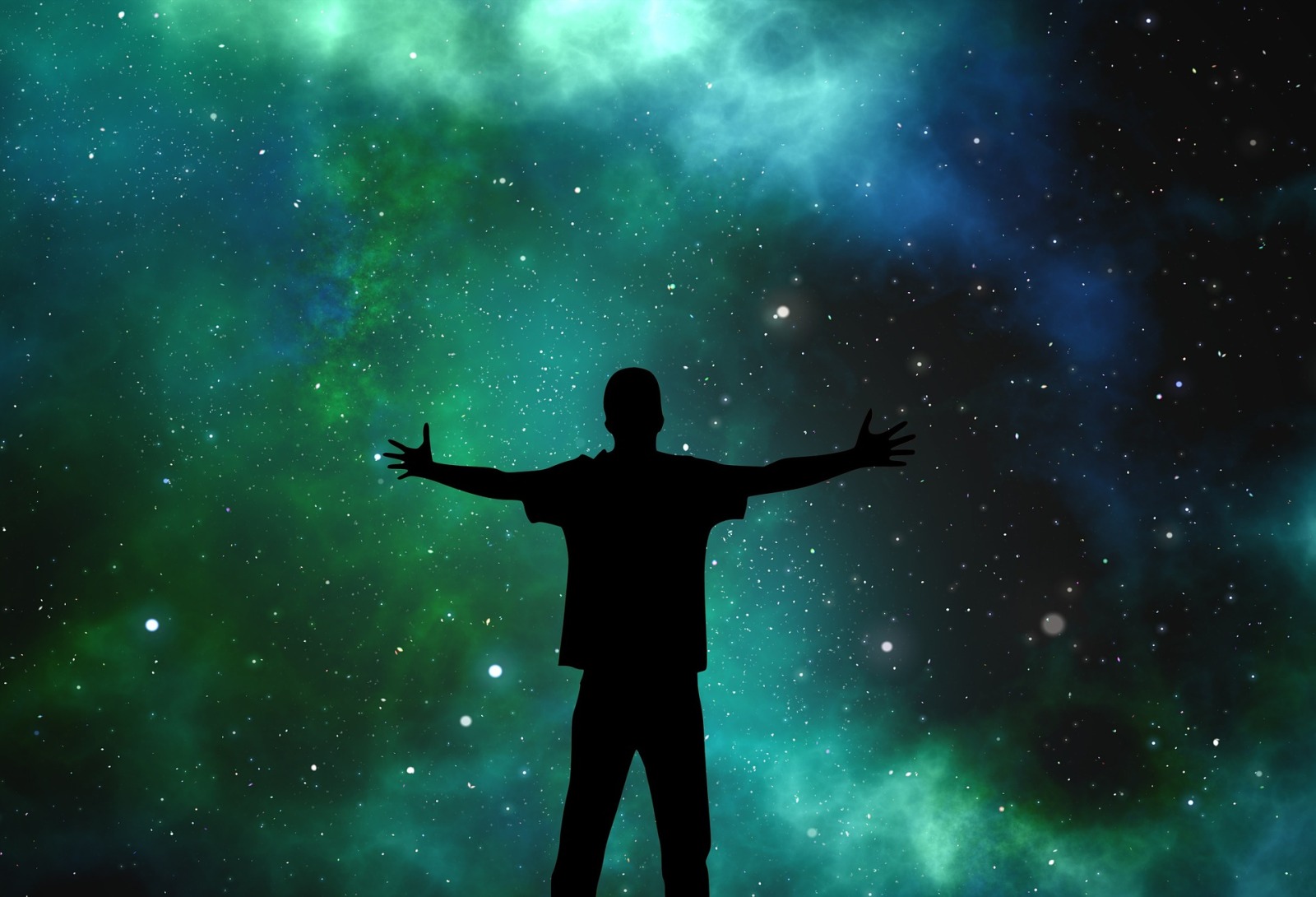 detection revolutionised astronomy and physics? Chris Smith put this to Andrew Pontzen and Martin Rees...
detection revolutionised astronomy and physics? Chris Smith put this to Andrew Pontzen and Martin Rees...
Martin - These gravitational waves are predicted by Einstein's theory and, in fact, they are the most distinctive and remarkable prediction of the theory and what is amazing is that the observations seem to fit extremely well with the calculations. So it's a really strong vindication of Einstein's theory, about 100 years after he proposed the theory.
Chris - Are there any other things that we should do in order to validate, vindicate, and corroborate Einstein's predictions?
Martin - Well we still don't know exactly what shape these black holes are and how fast they're spinning and, of course, as astrophysicists, we'd like to know how the black holes got there. What was the evolution that led to them so there's a great deal for astrophysicists to do.
Chris - We've heard a lot of people saying these gravitational ripples arrived from a billion light years away. How do we know where those black holes were situated out in space?
Martin - The signal was detected in two detectors about 2,000 miles apart, and there was a slight time lag between the two detections and that tells you something about the direction because it tells you how much longer it took the waves to get from one to the other, going at the speed of light. And if we had three detectors, we could do a kind of triangulation, but I think we should realise what amazing technology this is. We're detecting this event, which happened millions of times further away than all the stars you see in the sky, and it's been detected by these instruments even though it's a tiny jitter in the mirrors that we heard about. A very tiny effect - it's amazing technology.
Chris - 1/10,000 the diameter of a proton is the catchphrase they're citing.
Martin - That's right. Another way they would present this is like measuring the diameter of a human hair at the distance of Alpha Centauri, the nearest star. So it's amazing precision so it's the engineers who need far more credit than the theorists.
Chris - And Andrew - is it true to say then that in the past we've had some of our efforts at astronomy frustrated by light being interrupted on it's course to us by stuff like dust and other other materials, but these gravitational waves should pass straight through everything? So we should, in theory not get them occluded by anything in way...
Andrew - Well, that's certainly true. But I think there's an even bigger difference when you start observing the sky using gravitational waves, which is the kind of objects you're picking up are simply things you would never see with a traditional telescope...
Chris - So this really is a new vista?
Andrew - Oh yes. I mean, even now, we're talking about two black holes about 30 times each the mass of our sun merging. If you just stop and think about what that actually means for a second, it's actually mind-blowing and...
Chris - I can tell you're excited. So on a scale of one to ten where would you put this?
Andrew - Well... It's sort of... I mean it's a ten...
Chris - He's lost for words!
Andrew - Look it's a ten in terms of scientific significance. In terms of my career, it's just a source of regret really because when I started, I had an opportunity actually to work on a PhD on gravitational waves. And, at the time, I thought... oh come on, I mean these tiny things, they're never really going to be detected are they? So I didn't and worked on something else and now I look like a bit of a fool.
Chris - Martin?
Martin - No, I would put it nine out of ten. In a way, the primordial gravitational waves, if we could detect them, would be even more exciting but they're very hard to detect. So that would have been ten out of then. I would give these nine out of ten but, because I'm an astrophysicist, I am not just interested in them as tests of Einstein's theory but as part of the evolutionary story of how stars form, evolve, and die. This is telling us about a new way in which stars end their lives.
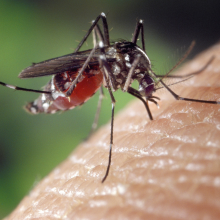
Why do mosquitoes prefer some people?
Felicity Bedford put this question to Heather Ferguson, from Glasgow University...
Felicity - Some people, including me, seem to act as mosquito magnets. I asked Heather Ferguson from Glasgow University whether mosi's really do target me or if I'm just unlucky?
Heather - This is absolutely true. We have very good evidence for a number of different mosquitoes, a number of different settings round the world so, if you think you're' the one in the group that's getting unfairly hammered by mosquitoes when you go out, it's probably true.
Felicity - Why is it mosquitoes find some people so much juicier than others?
Heather - Well that is an age old question and I think people have been thinking about this pretty much for as long as they've been getting bitten by mosquitoes. And the short answer is we don't actually have a precise understanding of why this happens. It's likely to be due to a complex mixture of environmental and genetic factors. It's a whole range of things including, for example, how much carbon dioxide you're omitting when you breath. Also it varies in response to different components of scent and odour that people will emit.
Felicity - This doesn't sound like something we can do very much about. Is it just a case of putting on some insect repellent?
Heather - Certainly repellent is really important and we would always advise people use it if they're going to an area where they're likely to be bitten. But there's a lot of other advantages to really researching this question and I think most noticeably, my collaborators in East Africa and other settings around the world have been making a lot of progress in trying to identify specific smells that attract mosquitoes, rather than repel them.
Felicity - That doesn't sound like something I want to be doing.
Heather - Well it can be hard work but the payoff can be huge because this is something, if you can find an artificial odour that really is very attractive to mosquitoes, you might be able to use it for a trap. So it is worth the effort.
Felicity - What kind of smells are we talking about here?
Heather - Some work that's been done by a colleague of mine, a Dr Fredros Okumu who's a Kenyan scientist. He spent three or four years of his PhD working really, really hard amidst the most ghastly smells you can imagine. Mixing different types of compounds at different concentrations, essentially always smelling as if he'd been locked up in a tent with a big rugby team, so really, really, smelly - sweat like odours.
Felicity - Oh, delightful!
Heather - But the payoff was enormous and he came up with a compound that, in some settings, can be about four times attractive to a malaria mosquito than an average person. So this has now been taken forward with a large injection of funds from the Gates Foundation with idea being that in the future we might be able to have an odour-baited trap from malaria mosquitoes.
Felicity - Thanks Heather. Short of finding a smelly rugby team to follow me around, I guess I'll be stocking up on insect repellent for now.










Comments
Add a comment